Puukko knives
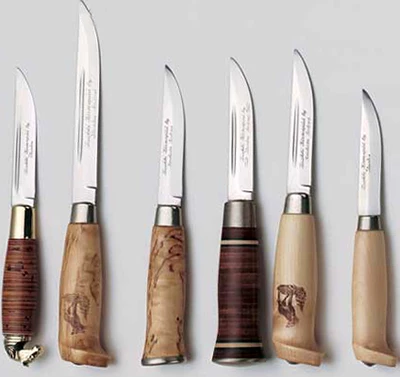
Basic characteristics
One of puukko’s traditional features used to be its hilt usually made of birch wood or reindeer’s antlers. However, the material is not exactly the key attribute today because of many alternatives became available as technological progress went further. There are other more reliable distinguishing characteristics such as shape of the knife and proportion of the blade – it is about the same size as a handle.
Puukko knives can be carried in a sheath attachable to a belt. The sheath is usually spathe-shaped and it covers both the blade and the hilt. It is sewn to fit exactly to its particular knife. It is mostly made of leather but variations made of birch bark may also appear.
The Blade
- Length 8 – 15 cm
- Broad up to 2 cm
- Thickness 3 – 4 mm
The knife is designed the way which allows user to apply more pressure on it. Its blade is held inside by a spike through the full length of the handle. This makes puukko very firm while it still remains quite light. Since they are primarily intended for cutting, most of them do not have a finger guard.
The handle is a little bit broader than the blade. It is simple but elegant. Some of them are curved up or down depending on main intended purpose. It is hard and probably not possible to give an exact description which could be generally applicable to all puukko knives handles. There are some given specifications but in reality a lot of different shapes or designs have been made in the two centuries of this kind of knife’s history. Every cutler can basically make his own little variance. Anyway, the handle should be always ergonomic to fit well in user’s hand.
Nordic knives
Apart from puukko, Nordic countries are home of another specific kind of a knife – leuku. The Sami people usually work with both of them. Puukko as mentioned above has blade’s length up to 15 cm, but leuku’s blade is between 20 and 45 cm. The reason is that leuku primary use is butchering and carving of reindeer meat.
Cutlery tradition is really strong in North Europe. Especially Finland is a famous producer of fine knives. It is a land of many family owned workshops and the producers have built themselves a very good name in the world for the quality and durability. A lot of cutlery workshops as well as bigger manufactures can be also found in neighbouring Sweden. Norwegians are producers of Nordic knives with barrel shaped handles.
Practical usage
Puukko was developed mainly for fishing or hunting but a scale of its usage is much broader. Its advantageous firmness and ability to concentrate the force is often benefited by woodcarvers. It can be handy helper for outdoor activities like camping, scouting and tourism. It is also good for gardening. In general it could be useful for anyone who appreciates its excellent quality or tasteful design.
Puukko knives are suitable for men as well as for woman since there are two versions. Version for women is slightly smaller in order to adapt the hand better, may be more decorated and the knives are constructed rather for working with food.
Due to their huge diversity puukko knives are also subject of collections. There are special sets being made e.g. the knives commemorating 1994 Winter Olympics in Lillehammer, Norway. Many variations are offered in the souvenir shops but you can also buy it in local groceries. In Finland it is an honour to be gifted by a good puukko. The word puukko found also its place in Finnish language: verb puukkottaa means “to stab with a knife”. Finnish soldiers often bring their own puukkos from home and they are allowed to wear it with standard uniform. Knifes are the part of cultural heritage of Nordic lands. Bearing of them is more common there and belongs to local traditions. In the northern areas such as Lapland it is practically necessary.

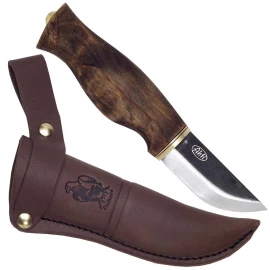
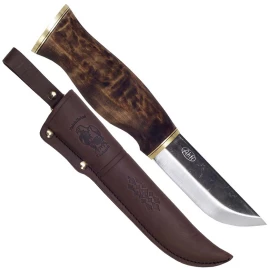
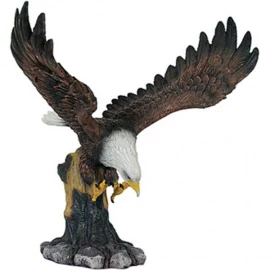
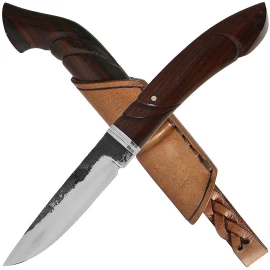
Comments